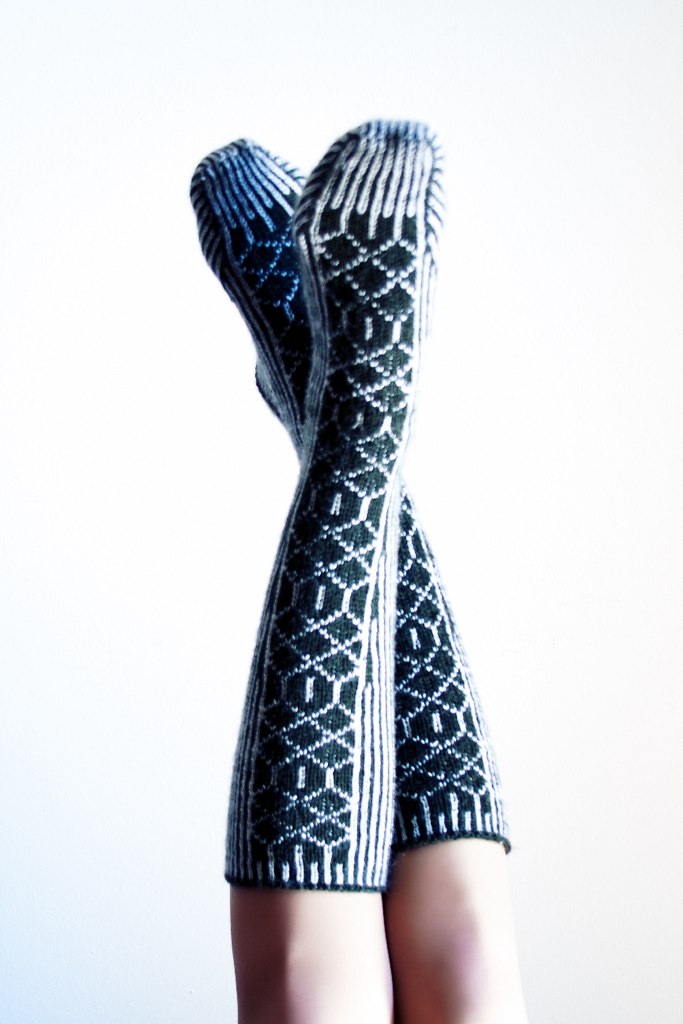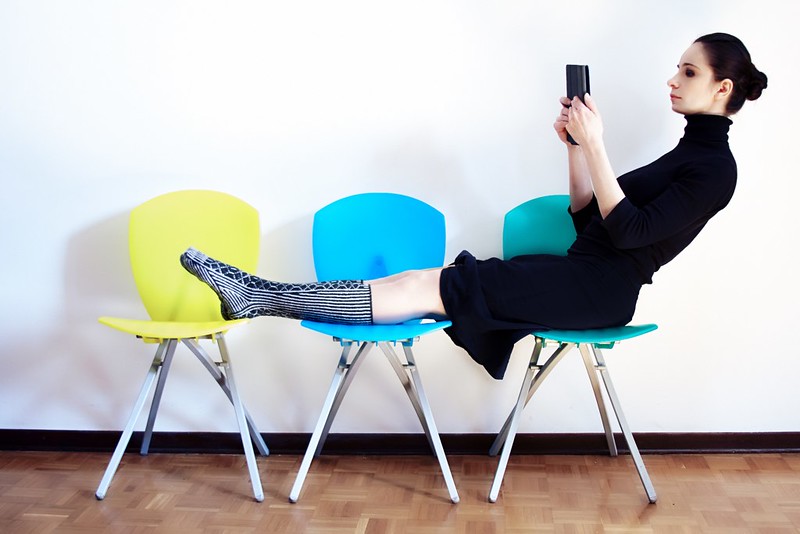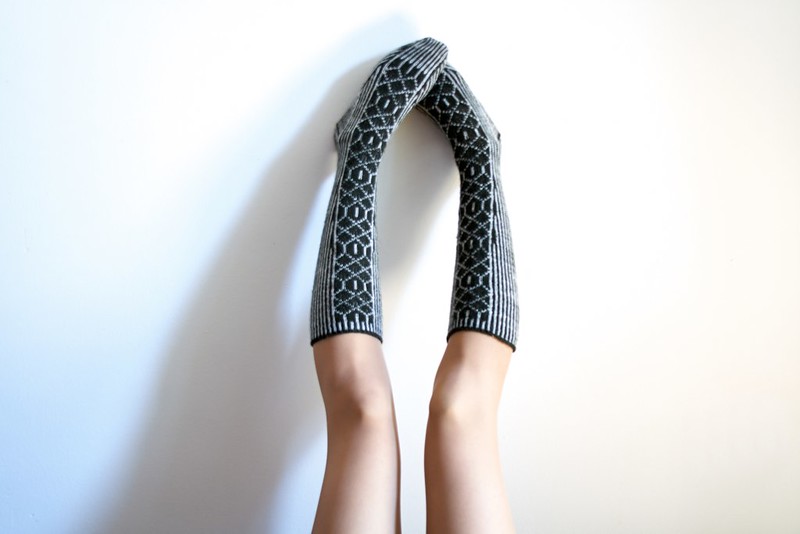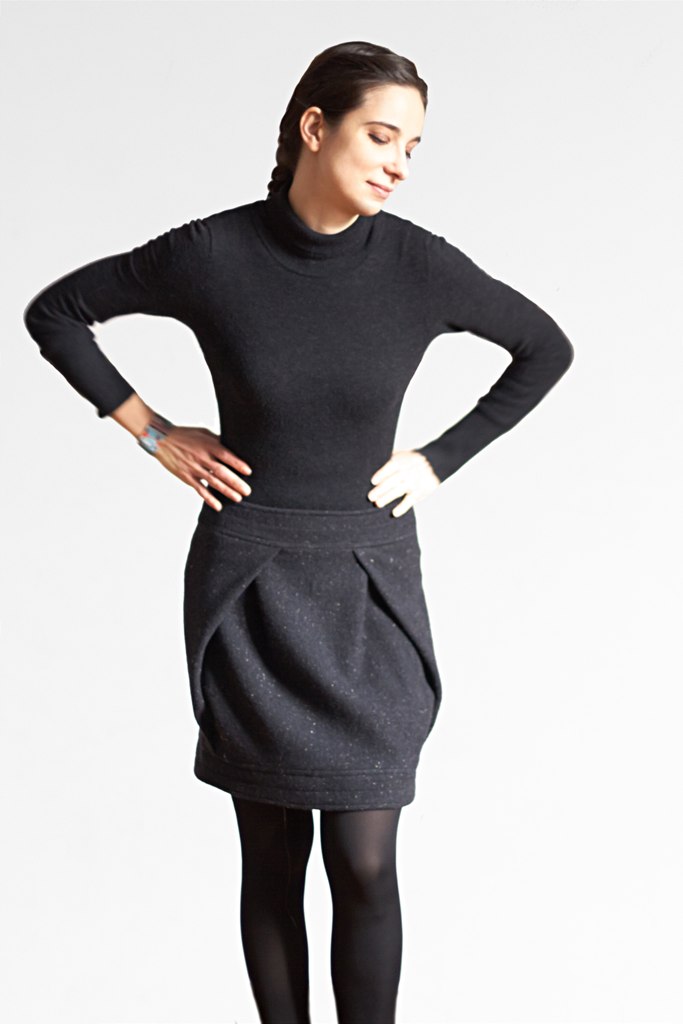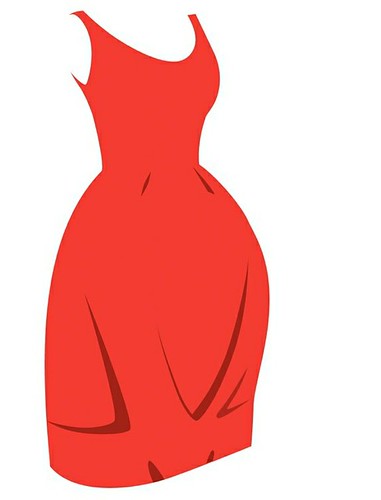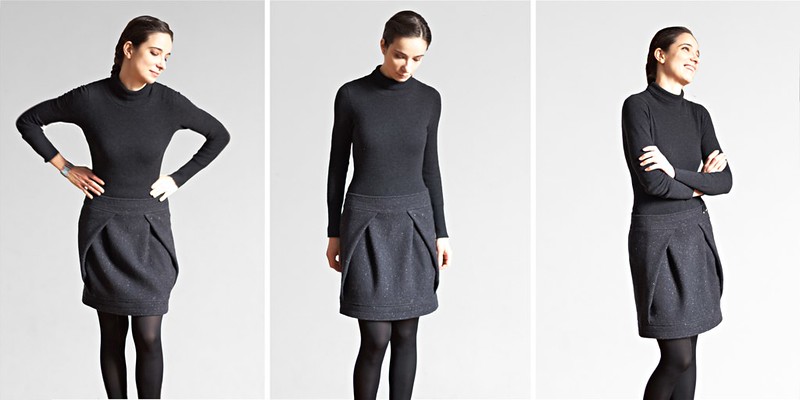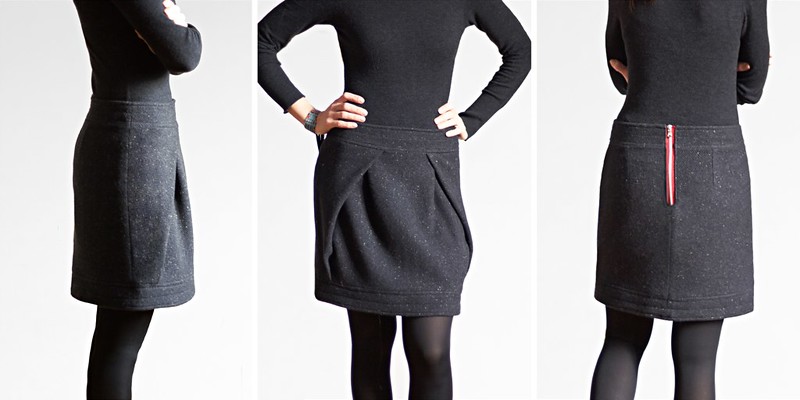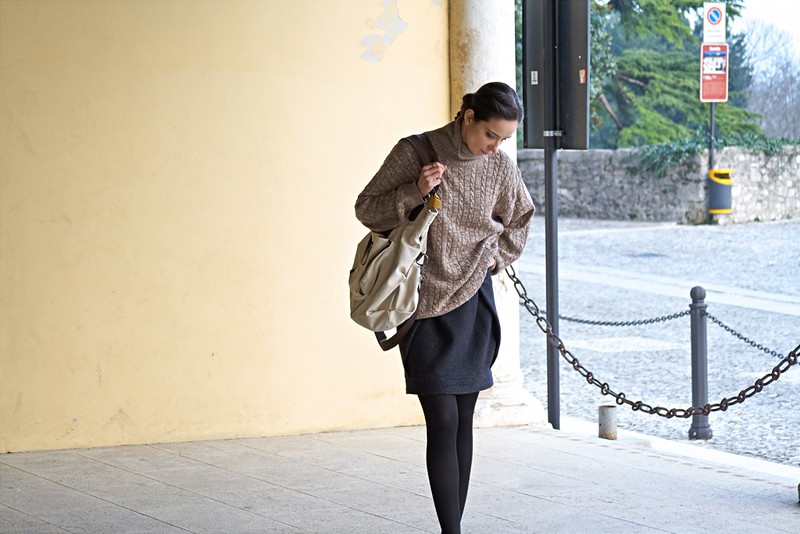Arched Shaped Socks
To be or not to be... a stasher? (Sorry Will, didn't mean to.)
I for one, am a "reformed" stasher. I used to buy a lot of yarn, because it was pretty or just in case. But as I'm not a very good planner I often ended up with three quarters of a sweater or a sweater and a half and I don't need that many hats. So, slowly and painfully, I managed to reduce my stash only to be left facing another problem. Do you know those evenings, maybe after having finished a project, when you can't wait to start another one, your fingers tingling? Not having yarn laying around can be quite painful. Living in a small provincial town, as I do, doesn't leave you that many options. The local shop or the internet. The internet is such a wonderful thing but to get a good yarn cost /delivery cost ratio or maybe free delivery you have to spend lots. Which is fine if you have to order yarn for some projects (more then one) you already planned for ... buying two skeins of yarn and spending more in shipping than for the yarn itself is not very wise. Isn't it? Furthermore, here in Italy, between order processing, transit times and the actual delivery, you could wait for your yarn, days, weeks or even a month - if you had the unfortunate idea to buy from outside the EU. So let's pray the local shop is open 'cause I have an itch in my fingertips and I'm still waiting for my yarn to clear the customs. But the local shop, my local shop, is a downer. Welcome to "acryliclandia"! I am a wool gal and in the wool department what they have to offer are a few yarns from Mondial and Mafil and I don't really know them. Without the help of internet reviews (couldn't find one) I decided to live “dangerously”…
Calzini ad Arcate
Essere o non essere una stasher? ( Scusa Will, non volevo.)
La “stasher” è colei che tende ad accumulare una discreta quantità di lana, tessuto e chi più ne ha più ne metta, (un po’ come una sorta di criceto industrioso) - ed io sono una stasher "riformata". Ero solita a comprare tantissima lana, perché mi piaceva o soltanto per ogni avvenenza. Ma come non sono molto brava a pianificare finivo spesso con tre quarti di maglione o un maglione e mezzo e non ho bisogno di così tanti capellini. Perciò piano piano e faticosamente sono riuscita a ridurre il mio stash solo per trovarmi a dover affrontare un'altro problema. Avete presenti quelle sere dopo aver magari finito un progetto, quando non vedi l'ora di cominciare un altro, un'impaziente formicolio nelle ditta? Non avere della lana in giro per casa può essere persino doloroso. Vivere in una piccola città di provincia, come me, riduce molto le possibilità. Il negozietto del paese oppure l'internet. L'internet è una cosa meravigliosa ma per ottenere la spedizione gratuita devi spendere una cifra avvolte impegnativa, il che va bene se devi ordinare la lana per dei progetti (più di uno) già pianificati... comprare due gomitoli di lana e spendere più di spedizione che per la lana stessa non mi sembra molto saggio. O no? Per di più, tra tempi di evasione dell'ordine e tempi di consegna bisogna aspettare qualche giorno, settimana o addirittura un mese - se hai avuto la sfortunata idea di comprare da fuori UE. Allora speriamo che il negozietto del paese sia aperto che ho le ditta che mi prudono e sto ancora aspettando che la mia lana lasci la dogana. Ma il negozietto del paese, del mio paese, mette tristezza. Benvenuti nell'"acriliclandia". Io amo la lana non la plastica e di lane loro ne tengono ben' poche. Qualcosetta da Mondial e da Mafil ... e non le conosco. Senza l'aiuto di recensioni su internet (non ne sono riuscita a trovare) decido di vivere “pericolosamente”…
…e provare "Gioia" da Mafil. E’ economica ma 100% lana merino decatizzata. Di categoria "fingering" e a 4 capi non è molto ritorta e lavorandola si separa facilmente in fili perciò se si sbaglia e bisogna disfare si fa un po' di fatica a lavorarla nuovamente e per quel’ che riguarda l'uncinetto dev'essere un piccolo incubo.
Per provarla ho scelto gli “Arched shaped socks” creati da Elisabeth Zimmermann e pubblicati da Meg Swansen in Vogue Knitting - The Ultimate Sock Book. Non è lo schema più facile da seguire ma il design e bellissimo. “Gioia" dev’essere un filato più sottile di quello raccomandato nello schema (vedi i dettagli del progetto su Ravelry) perciò per ottenere il campione ho dovuto usare dei ferri più grossi (3.5 invece di 3.25). A pensarci dopo forse avrei dovuto usare quelli con un diametro inferiore visto che i calzini sono venuti un po’ grandini per le mie gambe.
Ho provato per la prima volta di lavorare nello stile “portoghese” - con i fili attorno al collo. Come penso si possa vedere non sono riuscita a tenere molto costante la tensione e senza rendermi conto ho anche invertito un paio di volte le direzioni di entrata tra il filo di sfondo e quello del motivo. Lasciando a parte i miei errori da principiante, mi piace questo stile di lavorazione e penso sia un modo più veloce di lavorare con più colori, per chi usa il metodo Continental.
… Ecco come ho pastrocchiato i talloni!
Da una parte mi piacerebbe lavorare nuovamente questo schema con una lana diversa, migliore?, ma conoscendomi e sapendo che già faccio fatica ad evitare la sindrome del secondo calzino penso sia un po’ difficile. Dall’altra, sono curiosa di vedere come reggerà questa lana nel tempo.
… e sono sopratutto, curiosa di sapere voi cosa siete: delle stasher oppure preferite comprare a seconda del progetto?
La “stasher” è colei che tende ad accumulare una discreta quantità di lana, tessuto e chi più ne ha più ne metta, (un po’ come una sorta di criceto industrioso) - ed io sono una stasher "riformata". Ero solita a comprare tantissima lana, perché mi piaceva o soltanto per ogni avvenenza. Ma come non sono molto brava a pianificare finivo spesso con tre quarti di maglione o un maglione e mezzo e non ho bisogno di così tanti capellini. Perciò piano piano e faticosamente sono riuscita a ridurre il mio stash solo per trovarmi a dover affrontare un'altro problema. Avete presenti quelle sere dopo aver magari finito un progetto, quando non vedi l'ora di cominciare un altro, un'impaziente formicolio nelle ditta? Non avere della lana in giro per casa può essere persino doloroso. Vivere in una piccola città di provincia, come me, riduce molto le possibilità. Il negozietto del paese oppure l'internet. L'internet è una cosa meravigliosa ma per ottenere la spedizione gratuita devi spendere una cifra avvolte impegnativa, il che va bene se devi ordinare la lana per dei progetti (più di uno) già pianificati... comprare due gomitoli di lana e spendere più di spedizione che per la lana stessa non mi sembra molto saggio. O no? Per di più, tra tempi di evasione dell'ordine e tempi di consegna bisogna aspettare qualche giorno, settimana o addirittura un mese - se hai avuto la sfortunata idea di comprare da fuori UE. Allora speriamo che il negozietto del paese sia aperto che ho le ditta che mi prudono e sto ancora aspettando che la mia lana lasci la dogana. Ma il negozietto del paese, del mio paese, mette tristezza. Benvenuti nell'"acriliclandia". Io amo la lana non la plastica e di lane loro ne tengono ben' poche. Qualcosetta da Mondial e da Mafil ... e non le conosco. Senza l'aiuto di recensioni su internet (non ne sono riuscita a trovare) decido di vivere “pericolosamente”…

